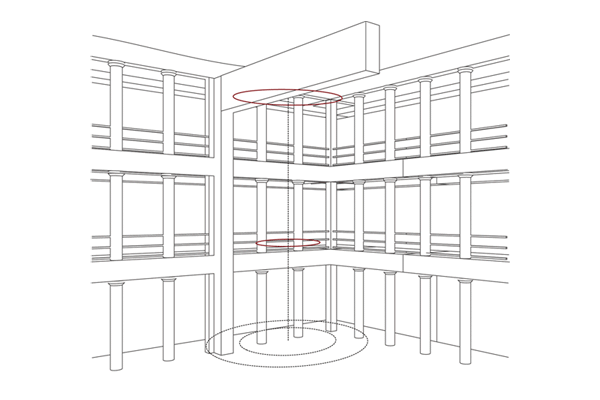top of page
 |  |
|---|---|
 |  |
 |
The Cloud
Repeat Competition, 2010
Competition Entry
"The Cloud"'s units display tension through rotation. Units in greater tensions have a greater rotation due to elements pulling on the unit. The minimal surface is analyzed to find tension within each unit. Rotation is then applied to these units based on the tension they are subjected to. A higher degree of rotation allows the unit to handle a greater tensile load.

"The Cloud" plays with light, creating sensory experiences. The placement, size, and rotation of the units provide different lighting situations causing these ephemeral experiences. As the units rotate, their aperture dilates or retracts depending on tensile conditions. These variations create an aperiodic pattern throughout the installation. The semi-translucent plastic sheets and aperture allow light to filter through and play within "The Cloud."

The two boundary curves of maximum and minimum extant of installation act as fixed boundaries for the surface to form along. As the surface relaxes to reach its minimal energy state, the environment begins to stretch and tear it apart. The final form of the surface is found in this state of tension. With its arms reaching out to the columns, the space is united as a whole.




The Minimal Surface and Units are created using Grasshopper along with Kangaroo and VB Scripting. The final form and unit composition are determined by tensile attractor points placed within the space. These points pull at the surface, creating the minimal surface.
bottom of page